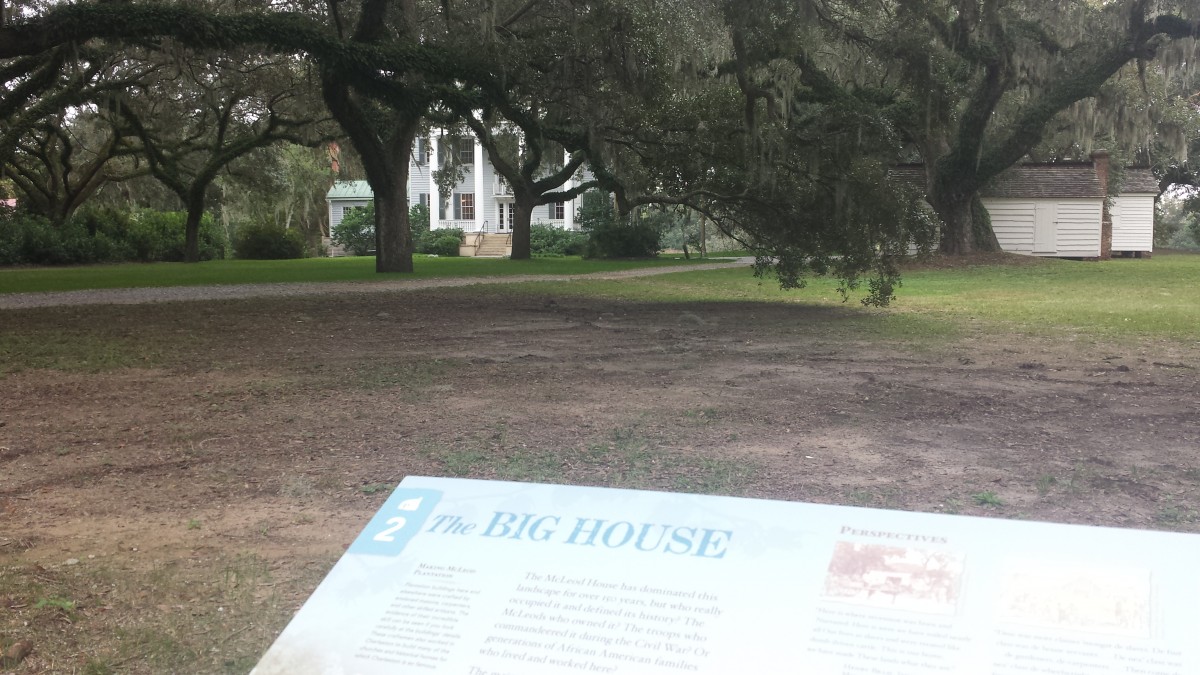I learned two new word on our travels: They are “Gullah” and “Geechee.” Perhaps some of you history teachers or enthusiasts are familiar with the words, but we weren’t. I wasn’t.
Gullah/Geechee names the descendants of enslaved Africans in Lowcountry Southeast America and embodies their creole culture then and now. It is believed that “gullah” is an Angolan word. Others consider “gullah” to come from Gola/Gula, an area near present-day Sierra Leone and Liberia. “Geechee” may come from Kissi, a group living around Sierra Leone, Liberia and Guinea, or it could have American Indian origins, such as after the Guale chiefdom or the Ogeechee River, a Muscogee (Creek) Indian contribution. Whatever the roots, the Gullah people are an amalgamation of African descendants — men and women and children from Angola, Senegambia, the Gold Coast, Sierra Leone/Windward Coast, Madagascar, Mozambique and other regions — who built community despite their circumstances and endured. (Wikipedia) They also offer names and faces to the otherwise generalized picture of slavery. Important. At least it is to me.
Gullah people and culture were once everywhere in the Southeast, from the Cape Fear River Basin in North Carolina to Jacksonville, Florida. Now, most of the Geechee community resides in Lowcountry South Carolina and Georgia, and part of their story is being told at McLeod Plantation Historic Site on James Island in Charleston. A gem of the Charleston County Parks and Recreation Commission, McLeod Plantation is nestled quietly at the corner of Folly Road and, ironically, Country Club Drive. Drivers headed north on Folly Road may sit for minutes on end awaiting the bridge opening and closing over Wappoo Creek, thus sitting side-by-side next to a row of slave houses. One cannot miss it, unless one does not look; it stares you right in the face.
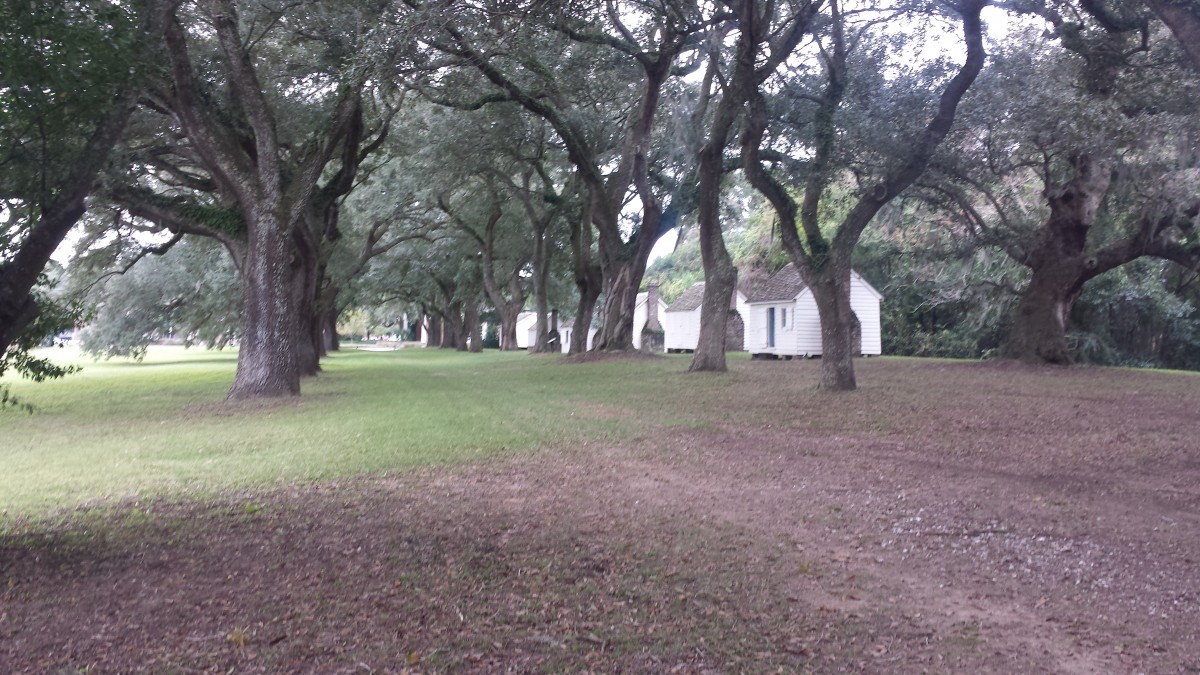
I was surprised to learn about McLeod Plantation. It came in the packet of information handed to us when we arrived at the James Island County Park campground. A low-ink, slightly off-center photocopy read that the commission had recently acquired this plantation and it was now a historic site. It didn’t cost much to visit and it was just down the road from where we were camping, but the nonchalant nature of the flier made it seem about as random as a last minute yard sale announcement. I put it aside.
I had considered visiting a plantation on our travels, but I was always turned off by the ornamental aspects of the popular ones in particular — those with large magnolia gardens, carriage rides, zoos, fancy big houses and outbuildings. I always found it difficult to tour a place that was built by folks who had little say in the matter, and that seemed glamorized in a way that absconded such truths. But I had the urge to visit a plantation in homage to enslaved peoples, as well as to others who had no voice or were silenced. I also wanted to know if there were moments of joy in their lives, despite their circumstances and ambiguous future. Is it naive of me to ask about fundamental human aspects of life? Did they love? Did they live? Was there laughter or hope? Did they thrive? Could they? Did they dare? One would hope so. I hoped so. It is difficult to know about the daily lives of such individual peoples as they were not afforded many opportunities to express themselves, nor were their lives necessarily and reguarly documented by others: Better records are kept about horse breeds and their lineages than those of enslaved peoples. I needed more than a textbook and TV show, and I needed a place of peace and blessing.
I did my research. I remembered the humble flier. I went to McLeod Plantation.
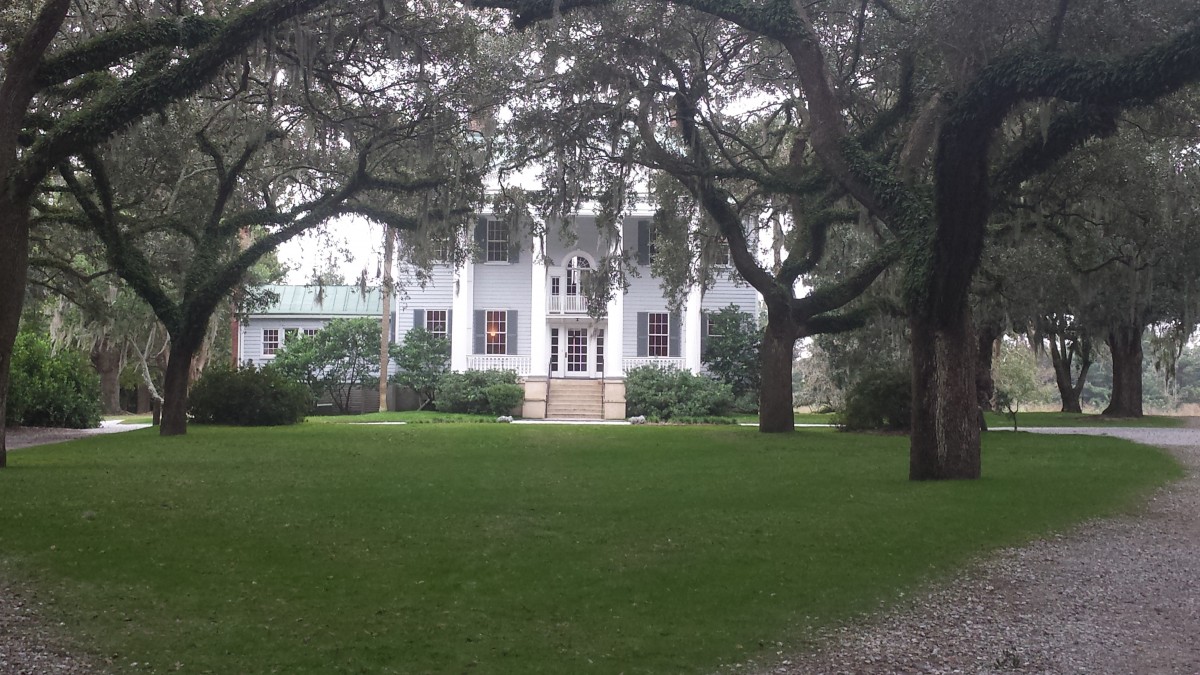
in 2011, the Charleston County Park and Recreation Commission obtained McLeod Plantation from the Historic Charleston Foundation in order to restore and protect it under public ownership. Opened in 2015, McLeod Plantation is federally recognized as part of the National Park Service Gullah/Geechee Cultural Heritage Corridor, and is listed as one of the African American Historic Places in South Carolina. Leading up to its historical Gullah significance, the plantation’s original house acted as headquarters during the American Revolution; was occupied by Confederate soldiers during the Civil War and African American soldiers from the Massachusetts Volunteer Regiments post-Civil War; served as a hospital; were offices of the Freedman’s Bureau, outside whose doors awaited soon-to-be freed slaves, who camped on premises with hopes of that fulfillment. However, it is believed that the history of the existence of the property goes back as far 1671. (South Carolina Plantations, Wikipedia)
The plantation itself was established in 1851 by William Wallace McLeod, who desired to cultivate sea island cotton on his portion of James Island. Enslaved craftsmen and women constructed a home and slave quarters, and tended to the crops. Although enslaved Africans were brought to America from all parts of Africa’s northwest coast, the Gullah/Geechee people were identified specifically for their roots as coastal farmers. Lowcountry Charleston, particularly James Island, shared similar terrain like that of Cote d’Ivoire and other coastal African countries, and so farmers familiar with the landscape were plucked from their native lands and positioned onto American soil. Some of those that survived the Middle Passage — the people that would become the Gullah/Geechee community — worked the land at McLeod Plantation.
A proud secessionist, William Wallace McLeod was a loyal Confederate. Later, his son, William W. McLeod II, inheriting the land from his father, continued the farming lifestyle of James Island with the help of free black men and women, who McLeod employed as cheap labor via loopholes in the discriminatory laws and rules governing anyone of African descent. The importation of Africans may have ended on a federal level in 1808, but the buying and selling of enslaved peoples was rampant within U.S. territory, especially the South, leading up to the Civil War. The Civil War may have ended slavery in American on a national level, yet the practice of overt discrimination made freedom very difficult for those seeking work, land, housing and more. This is part of McLeod Plantation’s heritage and history, too, a story you will find at McLeod Plantation Historic Site.
Luna and I walked the premises on a cold, overcast Sunday, which emphasized the heaviness of the atmosphere, as well as the peace and sanctuary it provided. Without the sun, the property and its messages seemed more audible, resonating in light whispers and murmuring bass tones, all echoes of the past, voices of the present. We listened.
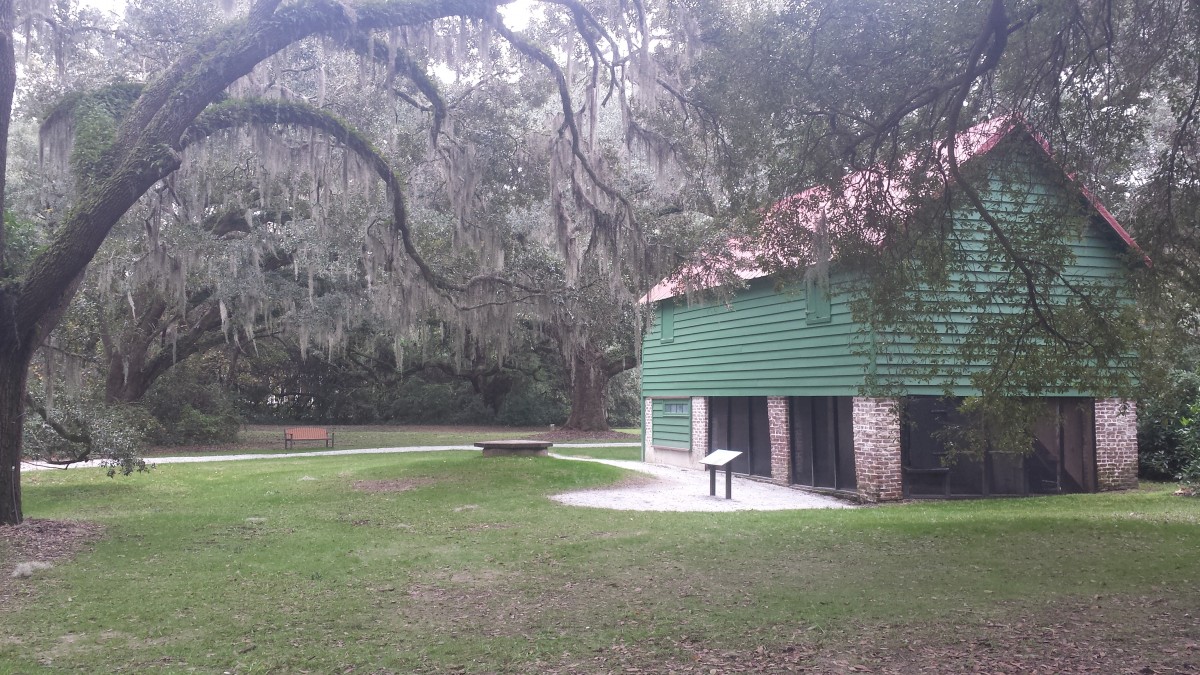
We stopped first at the green Cotton Gin House. We heard that there lives a family of foxes. Luna looked for the foxes, and I investigated the dry, dusty contents of the the structure, which reminded me of the antique barn at the county fair in my home town, which contains items of yore that don’t resonate much with present-day goings-on. The placard lets one know what did go on at the Cotton Gin House and by whom.

Luna was cold and she seemed to be holding her blanket more tightly, perhaps because she, too, sensed the heaviness of the place. She knows a little bit about slavery, as much as any six-year-old can comprehend about history and how folks did things, how other folks were treated. Among all that she has learned from our experiences in Williamsburg, Jamestown and in Charleston, she knows that families of all backgrounds endured much and often were separated or died, which would raise concerns in any child. She also noticed more black folks in the South than she had seen in our northern digs. There is a reason for that, too. How do we appropriately nurture such awareness? How do we make an ugly part of history into something more transformative than what has been perpetuated psychologically from the past? Many were my thoughts and questions. I picked her up to warm her and reassure her as we headed to the Big House.

The Big House was like any home built for or by someone that wants to display what he or she has. Wide and high, supported by towering pillars and a grand entrance of a front porch, as well as a large, heavy door, the McCleod Plantation Big House exudes wealth, even though it is likely that the picture painted here was of a typical middle class plantation. It seemed enormous compared to our tiny house on wheels, and was a bit off-putting, because our family is so far removed from grandiose. But I was happy that we entered, because we met Sara.
Sara, a very pretty young writer, tour guide and direct descendant of Gullah people, welcomed us into the home, which was void of furniture except an old piano and a few rugs. She was serious at first, looking at us through her cool glasses. She explained some things and answered questions. Yes, there were many folks working here — close to forty read the card. No, no one was paid (a question from Luna). Yes, enslaved women and children were separated, especially if the black woman was the nanny, who rarely saw her own child or family as she was to take constant care of the plantation owner’s child, often sleeping on the floor next to him or her whenever required. Otherwise, work for enslaved women was relegated to domesticity or none at all. Yes, there were some joys, like the gift of their spirituality, specifically the possibility of forgiveness through their Christian roots, which was of immense help most recently after the 2015 church shootings. Their culture is a gift, too, she said.
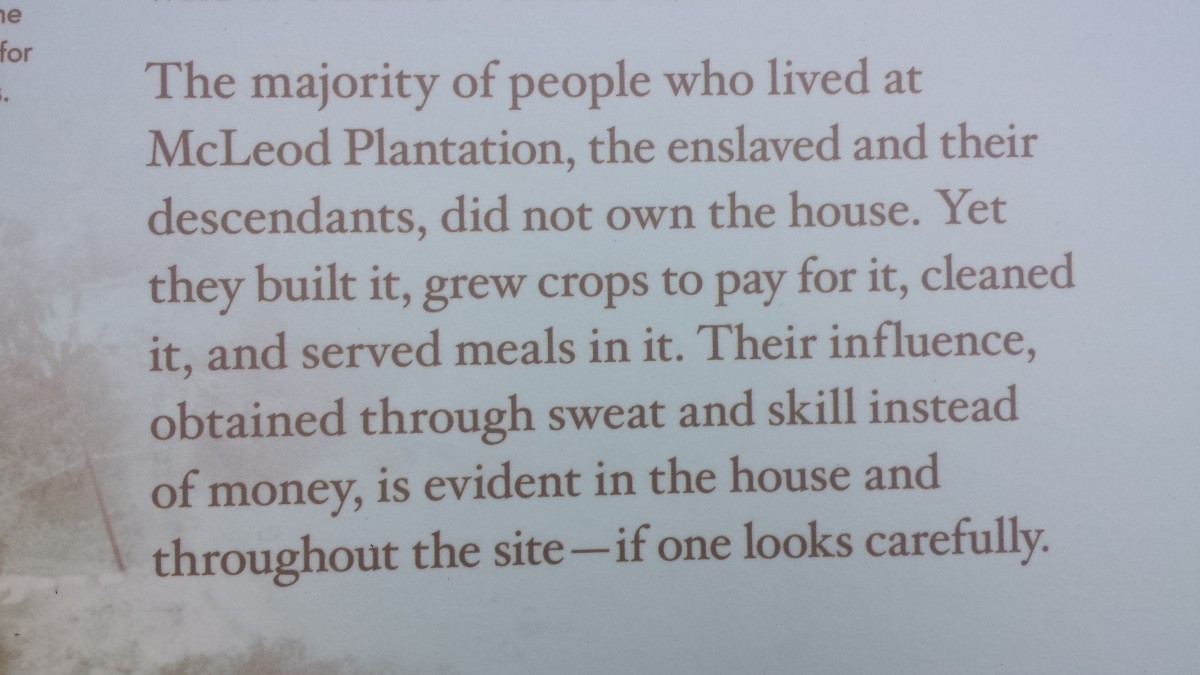
Luna became worried again, recognizing that we were talking about intense topics. But Sara came to the rescue by noticing Luna’s blanket, commenting that she, too, had such a thing as a child, even keeping it into adulthood, semi-undercover. Luna sat on my lap and snuggled and we talked some more; it seemed that we all felt better. Then we discussed writing and travel and all of the things that creatives and dreamers imagine. As we warmed up and conversed, Luna became restless. It was time to head outside again and explore.
Like much of Southeastern Lowcountry, McLeod Plantation is home to an abundance of magnificent oak trees adorned with Spanish moss. The plantation has a special oak on site, one believed to be more than six hundred years old. I have read that it could be over one thousand years old. Whatever the age — oh, the things the oak has seen, the stories it could tell! Oh, if only we humans could remember our own roots and groundedness, not taking but rather giving and receiving in natural rhythm. Older than the plantation, older than the country, the blessed oak embraced us as we embraced it. It offers a sense of unity, strength, peacefulness and calm, truly.
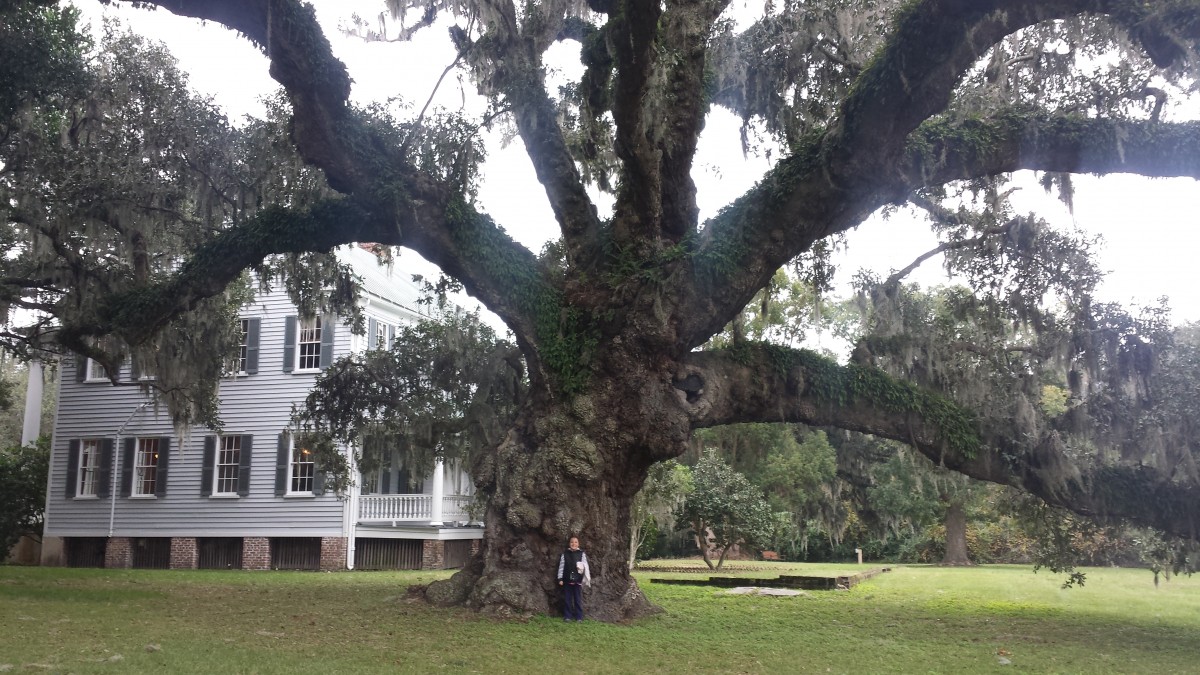
The great old oak sits at the head of the allée, which guards the row of homes for the enslaved, small white structures that equal in size to our tiny house on wheels, all twenty-six feet of it. However, the choice was ours to reside and travel in such parameters and all three of us do so comfortably. Slave homes often housed six or more people. Shutters and a fireplace served to keep out the cold, but there is little else in the structures to indicate that much care or attention was paid to these folks. They were there to work and support the plantation.
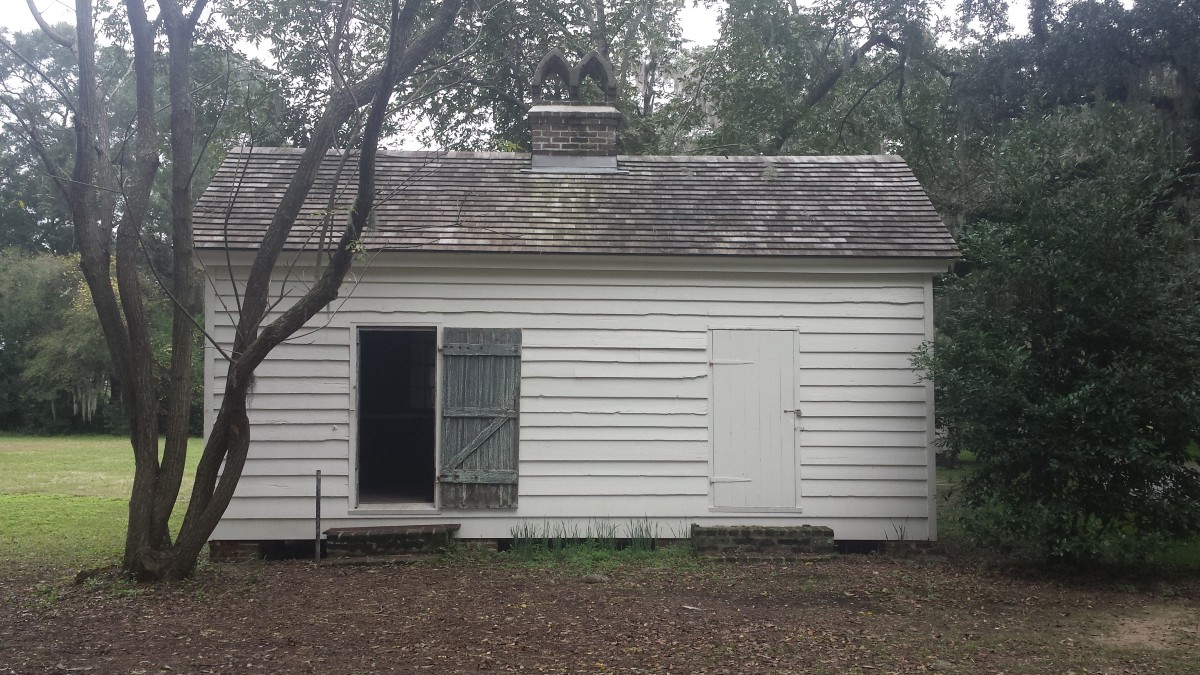
The homes for the enslaved has come to be known as Transition Row. During slavery and after Emancipation, some of the homes were used for worship, and in aforementioned forms. But while enslaved, the edifices belonged to the plantation owner. There was always talk that those enslaved at McLeod Plantation would receive some of the land they worked, but that never came to fruition.
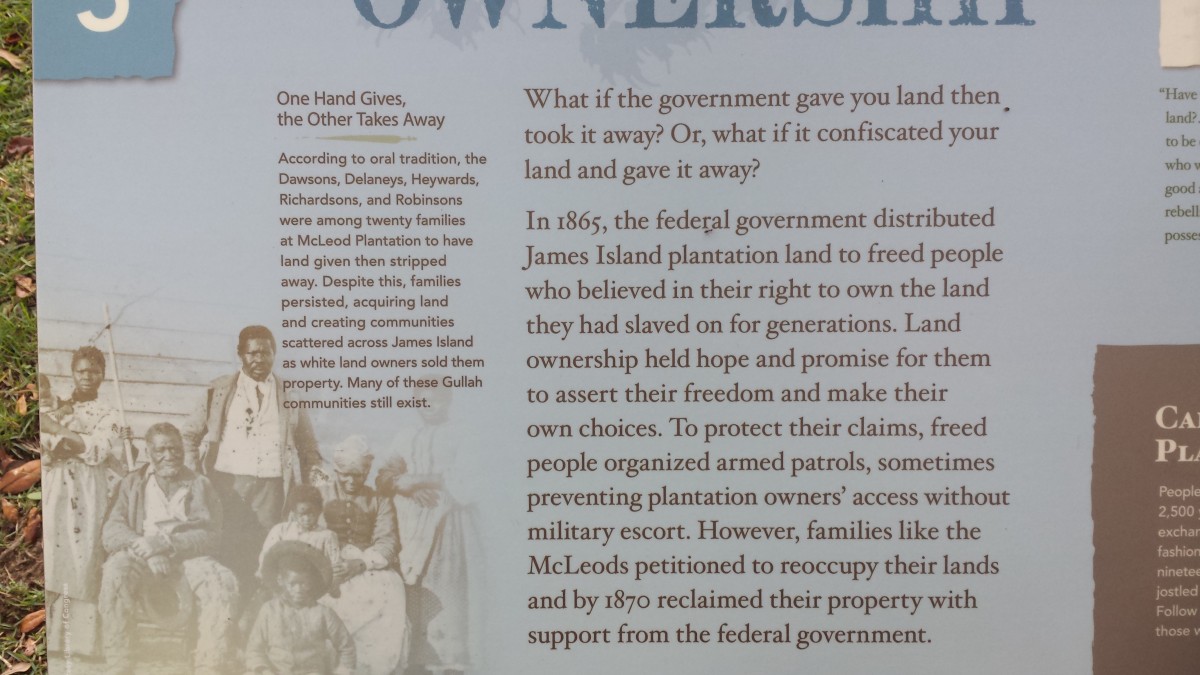
Despite so much history of gloom and doom, McLeod Plantation is not ugly. It is difficult to explain the serenity present, but I saw it in the gestures of others walking the grounds along with us. It is a place of story and of history, highlighted by men and women, black and white. There is heaviness, yes, but there is gift and lesson and a gentle way about it, too. It is much bigger than all of us, yet we are all part of it. There is more to see — a cemetery, a pavilion near the river, Wappoo Creek Landing. There is a also a Transition to Freedom App that will help anyone interested in American History navigate this historic place. If you choose a plantation, go here. Visits like this will help our collective history move into something more freeing for all of us, to a place truly untethered.
